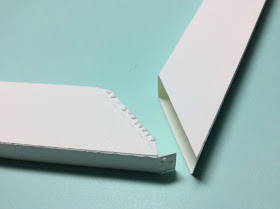Coding a design in TurtleStitch allows for a dynamic method of creating board games. https://www.turtlestitch.org/run#cloud:Username=Elaine&ProjectName=Shuffleboard In this blog posting, I created a shuffleboard game which allows for a collared ball bearing also known as a shuffleboard weight, to glide across the surface of the board when pushed. Play alternates between two players pushing their shuffleboard weights across the board to the numbered sections. The numbered sections represent the value which is tallied when all of their shuffleboard weights are played. The winner is the player with the most tallied points.
Saturday, February 18, 2023
A STEM Project: Making a ShuffleBoard Game Using a TurtleStitch Created Board Frame
Tuesday, February 14, 2023
A STEM Project: Making a Variable Sized Heart Box Using TurtleStitch
In this blog posting, I will explain how to make a variable size heart box using TurtleStitch to generate the components of a heart box and to cut them out with the Silhouette or another electronic cutting machine.
NOTE: For my Silhouette friends, I have included a file for the regular size heart box, with a scale of 1, at the end of this posting.
How to Make a Heart Box in TurtleStitch
The first thing that you need to understand is how a heart shape is created.
Monday, February 6, 2023
A STEM Project:Creating an Embroidered Design on Cardstock and Making a Paper Picture Frame in TurtleStitch
Press the letter "u" to move the mouse without drawing. To move multiple times without drawing. Press the letter "u" multiple times. The letter "u" must be pressed twice for a jump stitch to be created. Once at the place where the stitch ends and the next "u" at the place where the next stitch begins. Press the space bar to continue creating stitches. I placed the stitch points about an 1/8 inch apart. Continue pressing the space bar to trace the design. If you do not like the last point that was traced, it can be removed with the "r" key.
The "e" key MUST be pressed when the design is completed. Make sure you do this before exporting the design to be embroidered for your machine. I did not do this and my Brother PE 800 machine would not load the exported design.
Export your design for the file type that is needed for your embroidery machine.
Embroider Your Design












































